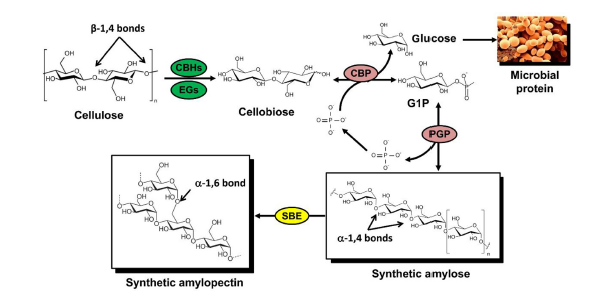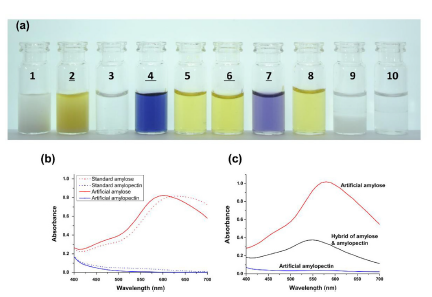Abstract:
Growing populations and climate change pose great challenges to food security. Humankind is confronting
a serious question: how will we feed the world in the near future? This study presents an
out-of-the-box solution involving the highly efficient biosynthesis of artificial starch and microbial proteins
from available and abundant agricultural residue as new feed and food sources. A one-pot biotransformation
using an in vitro coenzyme-free synthetic enzymatic pathway and baker’s yeast can
simultaneously convert dilute sulfuric acid-pretreated corn stover to artificial starch and microbial protein
under aerobic conditions. The b-glucosidase-free commercial cellulase mixture plus an ex vivo twoenzyme
complex containing cellobiose phosphorylase and potato a-glucan phosphorylase displayed on
the surface of Saccharomyces cerevisiae, showed better cellulose hydrolysis rates than a commercial bglucosidase-
rich cellulase mixture. This is because the channeling of the hydrolytic product from the solid
cellulosic feedstock to the yeast mitigated the inhibition of the cellulase cocktail. Animal tests have
shown that the digestion of artificial amylose results in slow and relatively small changes in blood sugar
levels, suggesting that it could be a new health food component that prevents obesity and diabetes. A
combination of the utilization of available agricultural residue and the biosynthesis of starch and microbial
protein from non-food biomass could address the looming food crisis in the food–energy–water
nexus.
Key Words:Biorefining;Cellulose hydrolysis;Food security;Microbial protein;Sustainable agriculture




